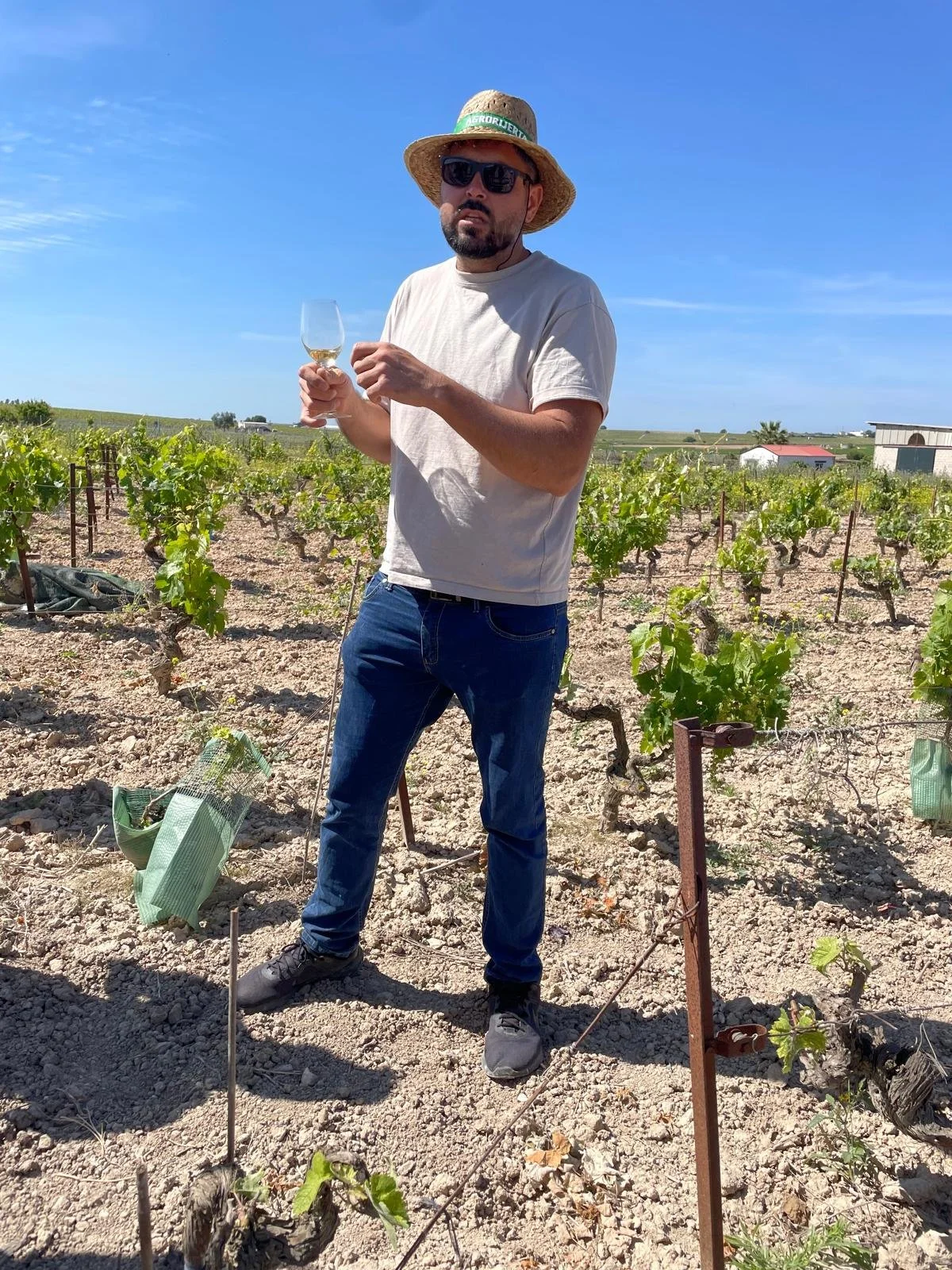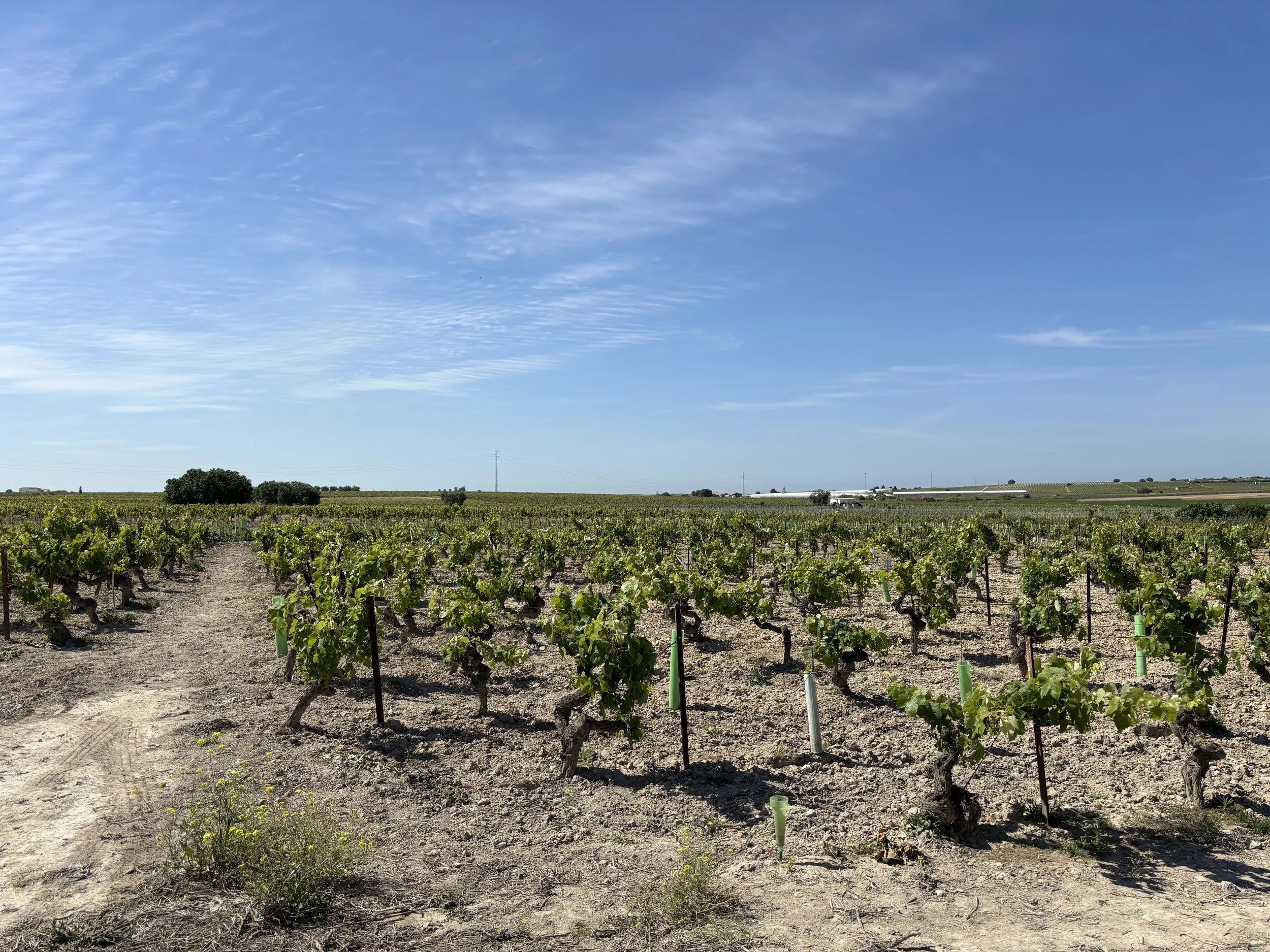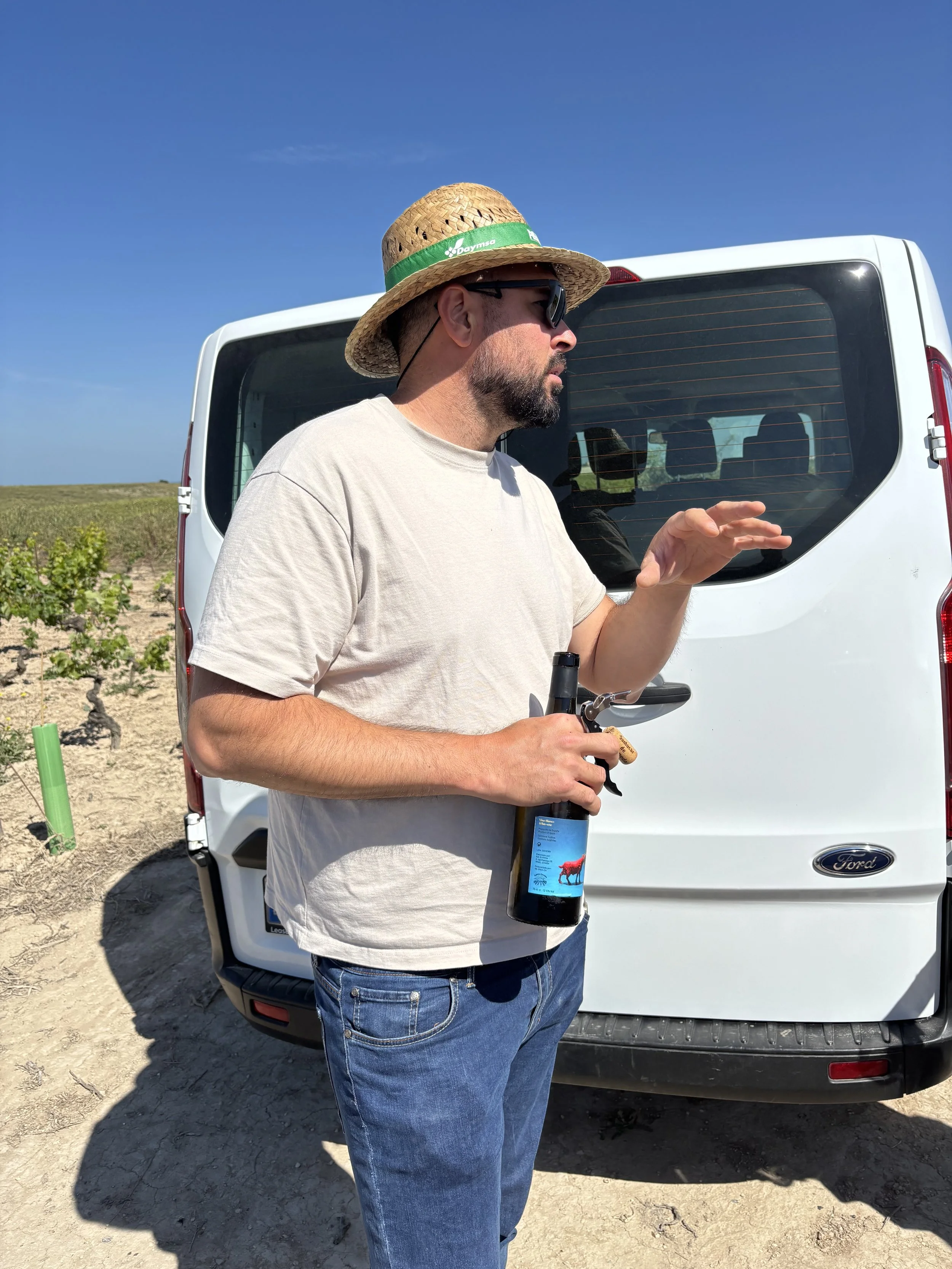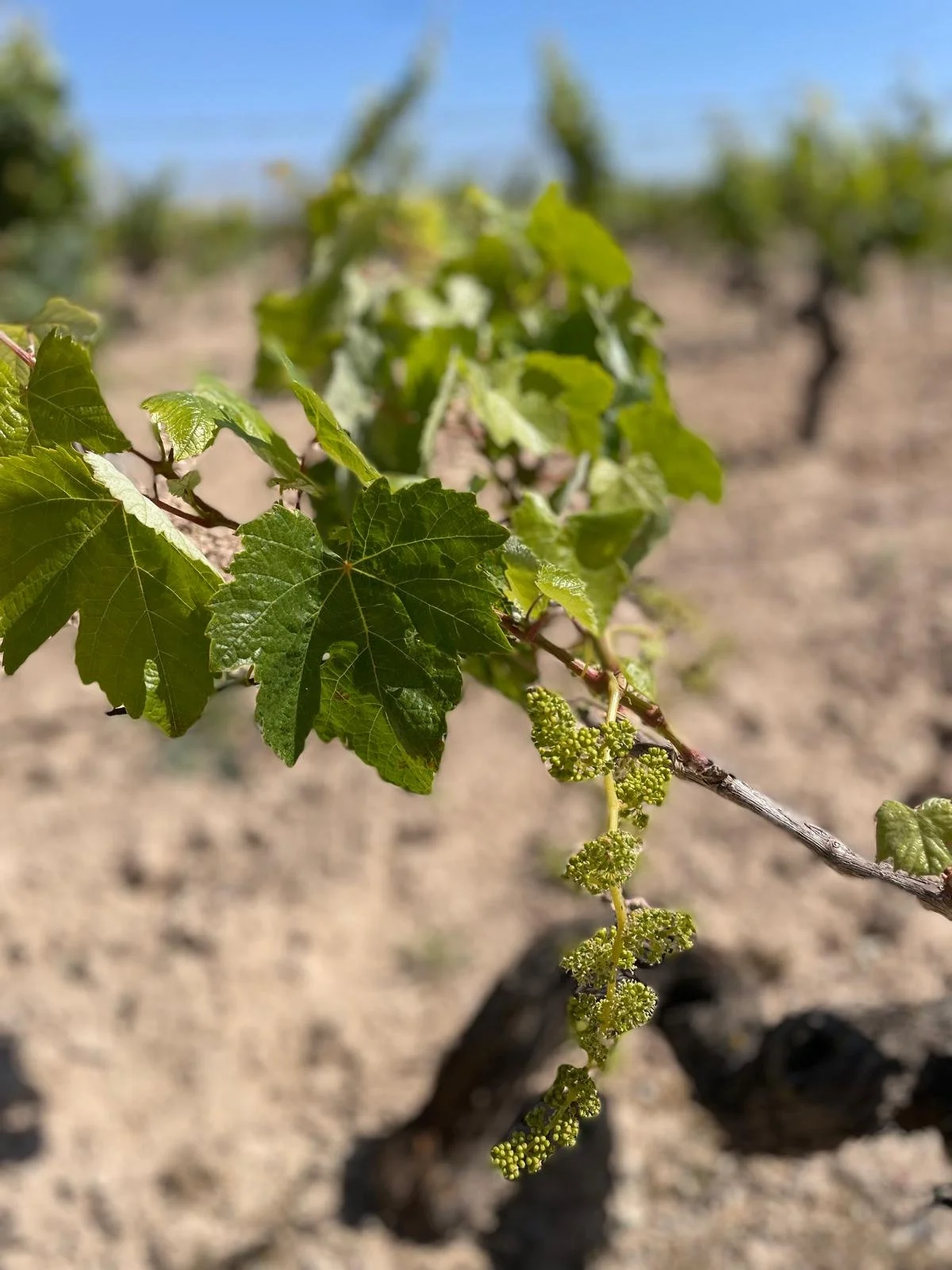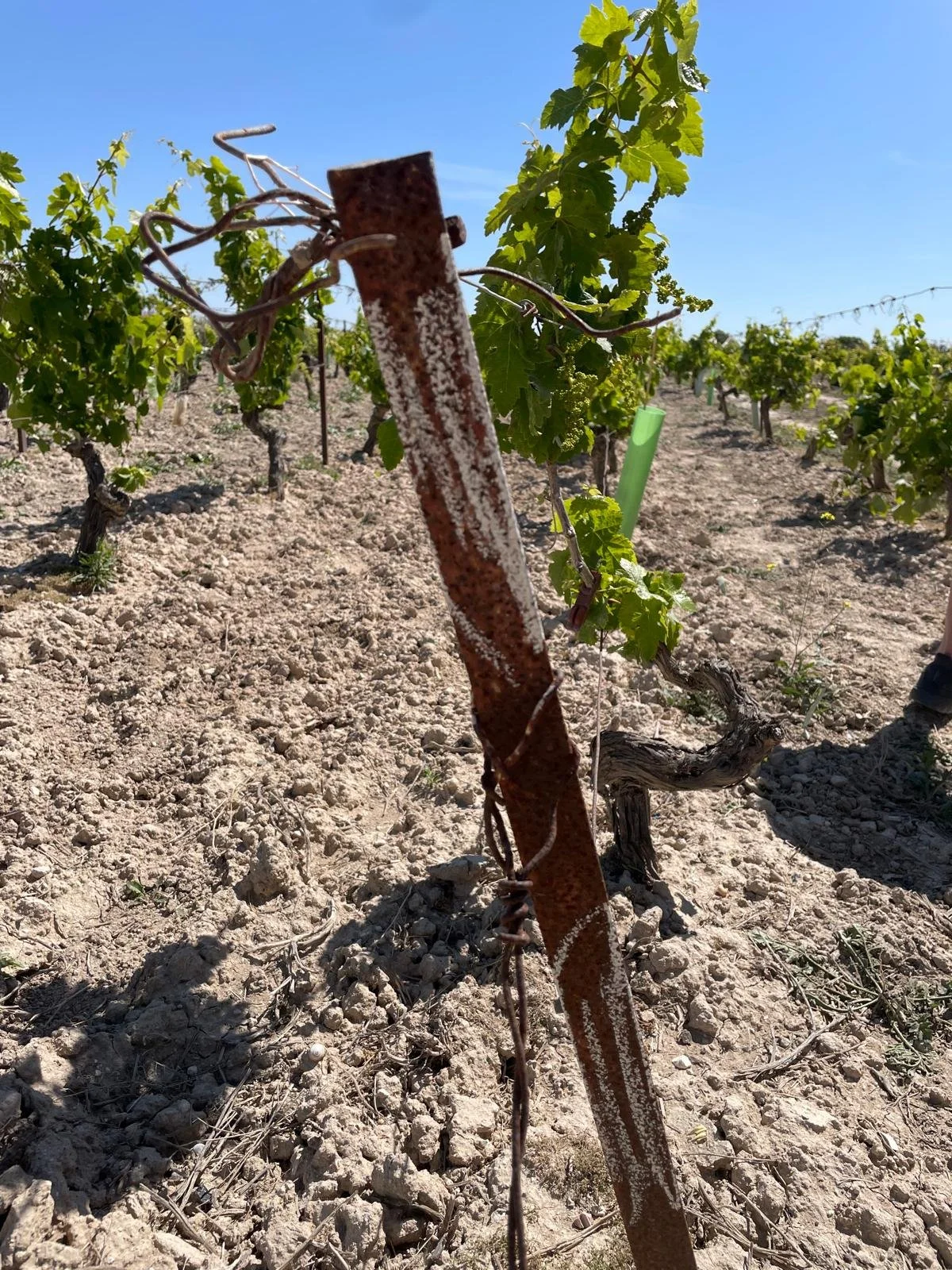Agrícola Calcárea: The Atlantic wines of Juan Jurado
Bill Bolloten tramples over the white stuff in Sanlúcar and tastes the Atlantic wines of Juan Jurado.
The panorama was a collage of colour and contrast. The rows of vines with their gnarly, cigar-brown trunks; the bright green vine leaves sheltering clusters of tiny berries; the dazzling white albariza topsoil. In the distance, the blue of the Atlantic Ocean and the lighthouse at Chipiona, the highest in Spain.
The setting was the Miraflores Bajo pago, considered to be one of the grand cru vineyards of Sanlúcar de Barrameda.
We were visiting the small 1.2-hectare vineyard of winemaker Juan Jurado. It was a lesson in how topography, climate and soil combine in a unique way with human activity to produce wines with a distinct identity.
Juan comes from a family of olive farmers in Dos Hermanas, near Seville. After working in hospitality in the UK, he gained winemaking experience in Australia, Chile and Italy before returning to Andalusia, where he invested his savings in purchasing the plot in Miraflores and starting his personal project, Agrícola Calcárea.
“I work here because I like the raw material,” Juan said. “And you have to believe in your raw material.”
As we walked along the lines of vines, half of which are Listán (Palomino) and the rest other varieties such as Beba, Cañocazo, Mantúa and Vijriega, Juan explained the terroir influences on the grapes and the resulting wines.
“Apart from the soil, the most important factors are the wind and the orientation”, he said. As the sun got hotter and hotter we enjoyed occasional bursts of cool breeze from the Poniente wind that blows in the from Atlantic, a key influence in keeping the grapes fresh. For Juan, this terroir is “muy costero” (very coastal).
As we walked further our steps kicked up the fine grey-white dust of the chalky albariza soil. “50 million years ago this was deep sea, and marine fossils make the soil rich in calcium carbonate,” explained Juan as he picked up a piece of chalk and scored a metal post. This soil acts like a sponge, absorbing rainwater during the rainy months and releasing it slowly to the vine roots during the dry, hot summers.
Work is constant through the life cycle of the vines. Juan demonstrated the traditional pruning method of the Marco de Jerez: vara y pulgar (literally, rod and thumb). Each vine grows from a single trunk with two brazos (arms), and harvesting alternates between them. In one year, the left arm is pruned back to a single spur (the pulgar) with one of two buds. The right arm (the vara) is left with a cane of seven to eight buds, and this is where fruit-bearing shoots are produced during the growing season. A shoot growing from the pulgar will become next year’s vara. “One brazo is resting,” says Juan, “while the other will give us grapes for this year’s harvest.”
We paused from time to time for Juan to open a bottle of each of his wines for us to taste.
The Porfía Blanco, his flagship wine made from Listán and five other varieties, had a honeyed, stone fruit nose and was round and delicately saline on the palate.
Sin Bulla, made exclusively with Listán, is macerated with the skins and fermented in a used Manzanilla bota. It had aromas of celery and light curry spice and a notably chalky texture.
Juan purchases Moscatel Romano grapes from Chipiona to make his Arrinconao cuvée. Fermentation with half of their skins in an old clay amphora makes a wonderfully expressive wine with structure and texture.
The El Descontrol, a clarete made from Moscatel and Tintilla, was refreshing and enticingly aromatic with a long, expressive finish.
Albariza, ocean and wind combine with Juan’s commitment to let the grapes speak for themselves in creating the honest and authentic wines of Agrícola Calcárea. Do yourself a favour and seek them out.
